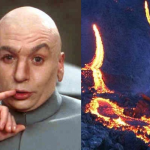Well, technically this is Friday tsunami blogging, but sometimes it's hard to tell the difference. Yesterday was the 50th anniversary of the 1958 Southeast Alaska earthquake and ensuing Lituya Bay megatsunami, a half-kilometer high wave which killed only a handful of people.
The earthquake happened on the Fairweather fault, a strike-slip fault which forms the main boundary between the Pacific and North American plates on the Alaska panhandle. Strike-slip earthquakes don't typically cause tsunamis directly - in a strike-slip event, the ground moves mostly horizontally, not vertically, so it…
tsunami
What makes earthquakes? Although there are many causes, including volcanoes, the most common thing that causes them are tectonic motions, which also cause tsunamis. But as valuable as it is to understand other planets in our solar system and in other star systems, sometimes it's important to understand what's going on inside our own planet.
The crust of the Earth actually is made up of a number of plates, which rub against one another and move over time. Who's to blame? I fault the liquid hot magma.
So what happens is that these plates slip against each other in one of three ways, as shown…
tags: earthquakes, tsunamis, geology
I carefully follow the news of Indonesia and other places in the South Pacific Ocean because that's where my research birds come from. So I was listening to radio reports of the recent spate of Sumatran earthquakes with great concern, worried that yet another tsunami would result. But as I listened to these reports, I noticed something else that was unusual; the reporters referred to multiple earthquakes occurring in the region, rather than one quake that was preceeded by foreshocks and followed by aftershocks. So of course, I had to ask the resident…
